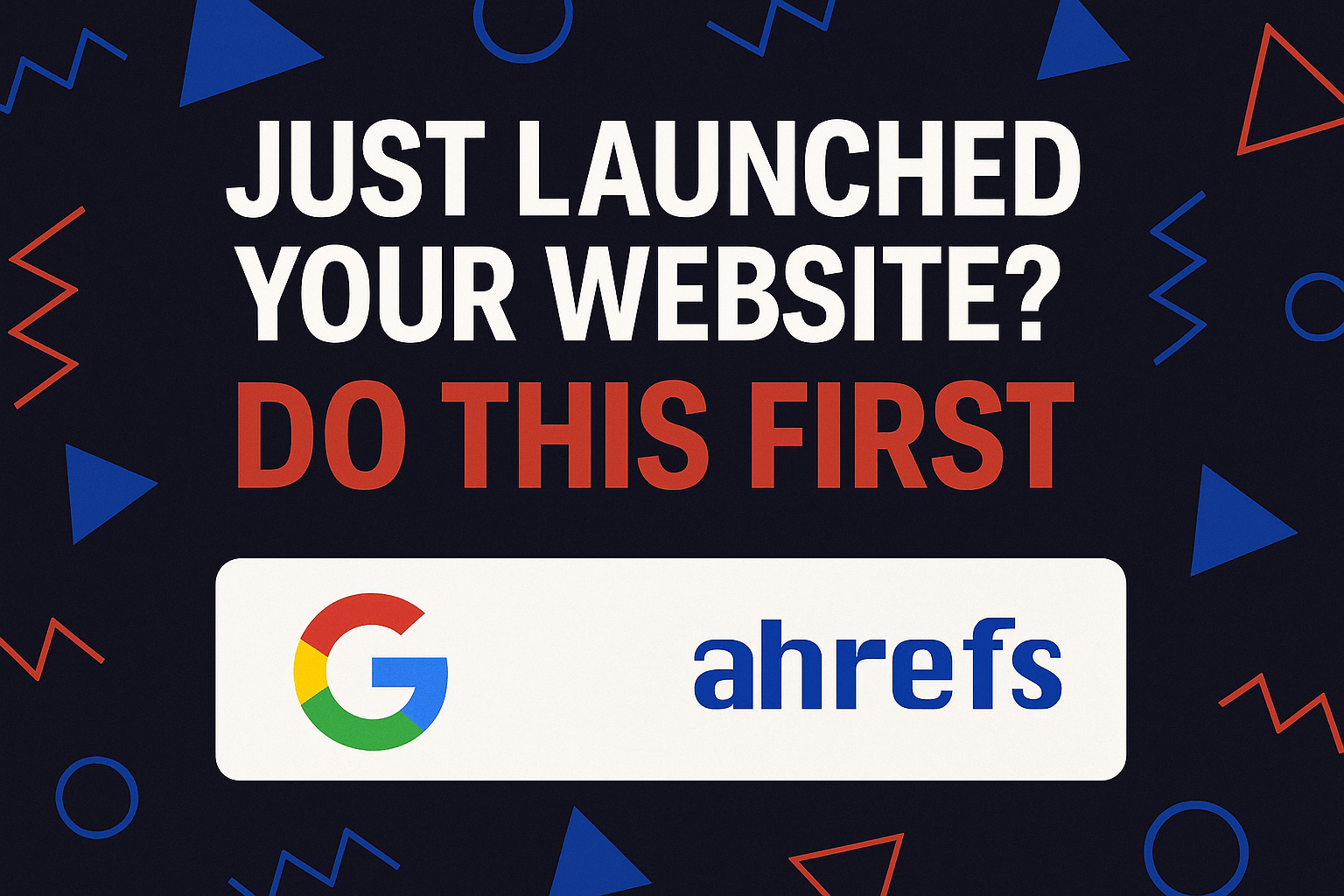So your website is live. The domain is connected, the homepage looks slick, and everything works (hopefully). But before you celebrate with a flat white, there are a few critical steps you still need to take to ensure your site actually gets seen — especially in the Australian digital landscape.
Let’s cover the three essential actions you should complete right after your site goes live.
Prefer watching over reading? You can check out the full tutorial on YouTube in the player below.
Or if you’re more of an old-school type who likes a proper walkthrough in text — just scroll down. Everything’s laid out step by step, like back in the good days of real how-to blogs.
Table of Contents
- Register Your Site in Google Search Console
- Set Up Google Analytics for Australia
- Add Your Website to Ahrefs
1. Register Your Site in Google Search Console
Why it matters: This is how you tell Google your site exists. Without it, you’re relying on luck (or a very patient Googlebot) to get indexed.
Even more importantly — it’s your free window into what people are actually searching to find your website.
You’ll get priceless insights into:
- Who’s linking to your site and which pages get the most backlinks
- Which keywords trigger impressions of your pages
- Your average click-through rate (CTR) from Google Search
Steps:
- Go to Google Search Console
- Add your domain as a Domain property (this includes all URLs and subdomains) or using URL preffix.
- Verify ownership
Bonus: You’ll get alerts for indexing issues, mobile usability problems, and even security issues — straight from Google.
2. Set Up Google Analytics for Australia
Why it matters: Analytics shows you how people interact with your site — who’s visiting, from where, and what pages they’re sticking around on.
Even better — Google Analytics doesn’t just show traffic from Google Search. You’ll also get visibility on visitors coming from:
- Bing and other search engines
- Social media platforms like Facebook, Instagram, LinkedIn
- Email newsletters, referral websites, and even messaging apps
This gives you a full picture of your digital marketing performance, not just your SEO.
Steps:
- Create an account at Google Analytics
- When setting up your property, set the time zone to Australia/Your location (f.e. Brisbane)
- Choose Google Analytics 4 (GA4)
- Add the tracking code to your site (either manually, via Google Tag Manager, or using a WordPress plugin)
- Check real-time traffic under the “Realtime” tab
Pro tip: Setting the correct time zone ensures your reporting aligns with Australian business hours — otherwise you’ll be analysing midnight “spikes” that don’t actually exist.
3. Add Your Website to Ahrefs
Why it matters: SEO tools like Ahrefs help you track your keyword positions, monitor backlinks, and run regular site audits to fix technical SEO issues before they become a problem.
Steps:
- Sign up for Ahrefs Webmaster Tools — it’s free
- Verify your site (you can use Search Console for this)
- Start a site audit to check for SEO errors
- Track keywords with a focus on the Australian market
- Monitor your backlink profile and competitors over time
Optional (but smart): If you’re running a paid Ahrefs plan, set up rank tracking and filter by Australia and English language to get more accurate local insights.
Final Thoughts
A website without data is like a shop without a till — you won’t know what’s working or what needs fixing.
These three steps — Search Console, Analytics, and Ahrefs — will help you:
- Get indexed by Google
- Understand your visitors
- Track your SEO performance
All of this is crucial if you’re targeting customers in Australia or planning to scale your digital presence here.
Need help setting any of this up? That’s what I do — especially for businesses targeting the Aussie market. Drop me a line.
